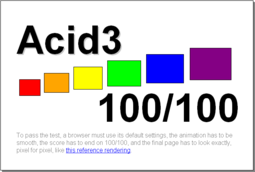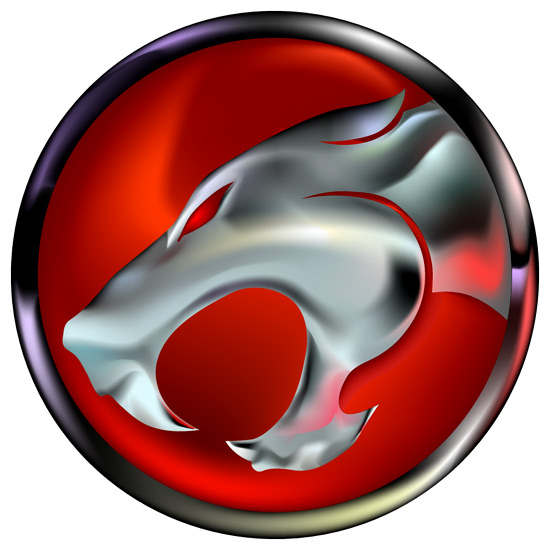miércoles, 10 de febrero de 2010
Canvas HTML 5
<canvas> was first introduced by Apple for the Mac OS X Dashboard and later implemented in Safari. Gecko 1.8-based browsers, such as Firefox 1.5, also support this new element. The <canvas> element is part of the WhatWG Web applications 1.0 specification also known as HTML 5.
Some interesting samples in this web: http://www.canvasdemos.com/
martes, 9 de febrero de 2010
Floating panel always in the same position
document.getElementById("FloatingDiv").style.top=document.body.scrollTop+100;
NOTE: If you are using Mozilla/Firefox, Safari 3 or Chrome you can see the round corners. This is a new CSS3 property (border-radius).
webkit (safari/chrome): -webkit-border-radius
gecko (mozilla/firefox): -moz-border-radius
click here and see how it works!
viernes, 5 de febrero de 2010
Create a simple popup with JavaScript and CSS
position:absolute
z-index:50
top:0
left:0
height:100%
width:100%
background-color:black
opacity:0.7
This layer has a z-index between the page and the popup (z-index = 50)
The popup is another div with the following style:
position:absolute
z-index:100
top:45%
left:45%
This panel is over the back layer (z-index = 100)
Click the following link to see the sample!
Open popup!
CSS 3 - Opacity
This is not yet a CSS standard. However, it works in all modern browsers, and is a part of the W3C CSS 3 recommendation.
Firefox/Opera/Safari uses the property opacity:x for transparency, while IE uses filter:alpha(opacity=x).
Move the mouse over the thundercats image to see the opacity effect.
Current Browser Support:
FireFox (3.0.5)
Google Chrome (1.0.154.36)
Opera (9.6)
Safari (3.2.1, Windows)
Check your browser with Acid3

jueves, 4 de febrero de 2010
Gecko

Gecko is a layout engine currently developed by Mozilla Corporation, known as the layout engine of the Firefox web browser, Mozilla Application Suite, Nvu, Mozilla Thunderbird and many more. It is designed to support open Internet standards, and is used by applications such as Mozilla Firefox, Camino, Flock, SeaMonkey, K-Meleon, Netscape 9, Lunascape to display web pages and, in some cases, an application's user interface itself (by rendering XUL). Gecko offers a rich programming API that makes it suitable for a wide variety of roles in Internet-enabled applications, such as web browsers, content presentation, and client/server. Development originated with Netscape Communications Corporation, but soon moved to the Mozilla Foundation for the Mozilla application suite, and now used in many applications developed by Mozilla Foundation and or the Mozilla Corporation, as well as many other open source software projects. It was also used in later Netscape Navigator releases.
Gecko is written in C++ and is cross-platform, and runs on various operating systems including BSDs, Linux, Mac OS X, Solaris, OS/2, AIX, OpenVMS, and Microsoft Windows. Its development is now overseen by the Mozilla Foundation. Licensed by a tri-license of the Mozilla Public License (MPL), GNU General Public License (GPL) and GNU Lesser General Public License (LGPL), Gecko is free and open source software.
Gecko is the second most-popular layout engine on the World Wide Web, after Trident (used by Internet Explorer for Windows since version 4), and followed by WebKit (used by Safari & Google Chrome) and Presto (used by Opera)
Original article: http://en.wikipedia.org/wiki/Gecko_(layout_engine)
CSS 3 rotation example
(Firefox (Gecko) 3.5 (1.9.1) -moz-transform)

If you are using safari/chrome you should see this mazinger rotated:
Safari (WebKit) 3.1 (525) -webkit-transform

If you are using IE...


